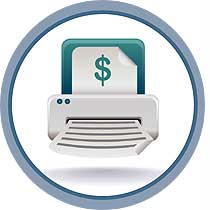Dec 08, 2008More companies are seeking to use RFID tags with Electronic Product Codes (EPCs) at the item level but find the cost of the tags a barrier. RFID tags made with printed electronics—both the antenna and the circuitry in a microchip are printed—promise to be a fraction of the cost of conventional RFID tags; standard printing processes enable low-cost manufacturing compared with the expense of a silicon microchip and the process of attaching it to an antenna. Kovio recently introduced a printed high-frequency RFID tag, but it's not EPC-compliant because the company said 96-bit EPC RFID tags are very complex and it wanted to start with a simple item-level tag.
One way to overcome the cost hurdle might be to use printed electronics to create a simple 12-bit EPC RFID tag, without a lot of the extra features in the current 96-bit Gen 2 tags. Manufacturers could employ the tags to distinguish among relatively few items. For instance, Hewlett-Packard (HP) has tested EPC RFID-tagging all of the items that are shipped with its printers—including the power cord, manual and CD-ROM—to guarantee the right items are put in every box. HP found that the technology worked very effectively, but the EPC RFID tags would have to cost about 2.5 cents each for this procedure to be more cost-effective than paying people to scan bar codes on each item.
Similarly, a retailer might be able to use a 12-bit EPC RFID tag to distinguish among a handful of tagged items—say, different sizes of the same items. Simple, low-cost 12-bit EPC RFID tags could jump-start adoption for some item-level applications.

